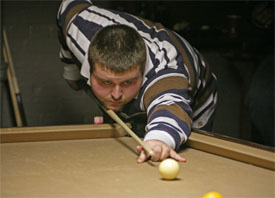That is simply incorrect.
One of the ways near sighted vision is often corrected is called monovision. In cases where correction is required both at a distance and close-up (for reading) a common alternative to bifocal lenses is monovision. Typically the dominant eye is corrected for vision at a distance and the non-dominant eye for close-up vision. There are a plethora of simple tests available to determine which is dominant.
I have been using monovision correction for years. The optician checks ocular dominance by having me look at something then covering first one eye then the other with a paddle. When the dominant eye is covered, the object appears to move from the location it was at with both eyes uncovered or just the dominant eye uncovered.
Determining ocular dominance is a well understood process.
You took something out of context of my post and snipped the rest. You should've seen and read this part:
[...] Unless he/she gave you an MRI and studied your brainwaves, he/she would not be able to tell you about your mental pathway "preference" unless a "preference test" (like that which was already proposed above) was performed. Even though the number of nerve contact/synapse points from each eye's optic nerve to the brain may be different between each eye, the mental "pathway preference" is actually "software" and can be rewritten.
[...]
That means, without YOUR input, the optician can't tell, by analyzing the eyes alone, which is your "dominant" eye. It's not like the "dominant" eye is different from the other somehow, nor are there "telltale" physical signs that say which eye is dominant.
Yes, ocular dominance is known and well understood by the professionals. It is not well understood by the average joe/jane, who think ocular dominance means the eyes themselves are somehow different.
-Sean

